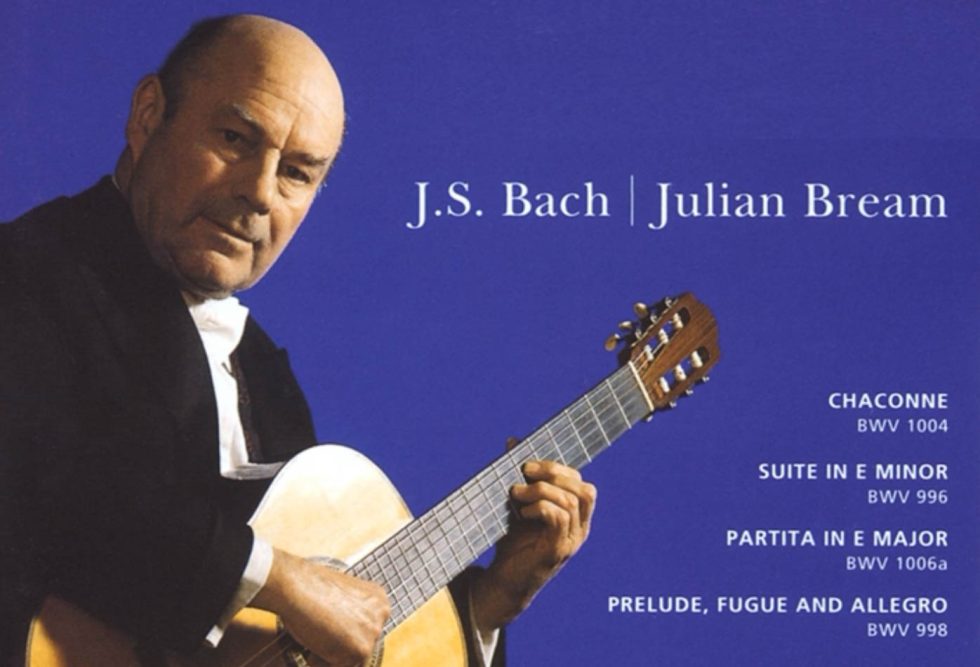
Bourrée in E-Moll – Johann Sebastian Bach: Ein Zeitloses Meisterwerk
Johann Sebastian Bach’s Bourrée in E Minor is one of the most iconic classical pieces, especially popular among guitarists due to its intricate yet approachable structure. Originally part of Bach’s Lute Suite No. 1 in E Minor, BWV 996, this lively dance movement has captivated musicians and audiences alike for centuries.
In this article, we will delve into the history and structure of Bourrée in E Minor, explore Bach’s significance in the world of classical music, and highlight the contributions of Julian Bream, one of the most important guitarists in history. As a fantastic example of this piece’s brilliance, we present a recording by Julian Bream, showcasing his unparalleled mastery and interpretation of Bach’s music.
Johann Sebastian Bach and Bourrée in E Minor
Johann Sebastian Bach (1685–1750) is regarded as one of the greatest composers in the history of Western classical music. His mastery of counterpoint, harmony, and structure has earned him a legendary place in music, influencing countless generations of musicians.
Bourrée in E Minor is an example of a French dance in quick duple time. Although originally written for the lute, this piece has gained popularity among guitarists. It’s a dynamic and rhythmic piece, offering both the performer and listener an energizing experience. Bach shows his deep understanding of instrumental expression and technical finesse in this work.
The Importance of Julian Bream
Julian Bream (1933–2020) was a distinguished classical guitarist and lutenist from England, revolutionizing guitar playing in the 20th century. He elevated the classical guitar to new levels of recognition and helped establish its place in classical music.
Bream was known for his exceptional technique but also for his unique ability to convey emotions through music. His interpretations of pieces, particularly Bach, were profound and precise. His interpretation of Bourrée in E Minor is an excellent example of his extraordinary ability to combine technical perfection with emotional depth.
Bream’s Influence on Classical Guitar
Julian Bream’s contribution to classical guitar is unparalleled. Throughout his career, Bream expanded the repertoire by commissioning major works from composers such as Benjamin Britten and William Walton. These works, written specifically for him, are now important parts of the modern guitar repertoire.
Bream’s focus was not only on solo performances but also on chamber music and ensemble settings. His interpretations of Bach, including Bourrée in E Minor, have inspired generations of guitarists and deepened the appreciation for Baroque music.
Why Bourrée in E Minor is Essential for Guitarists
For classical guitarists, Bourrée in E Minor is a must-learn. It challenges both technical precision and musical expression. Guitarists who master this piece benefit from practicing complex rhythms and harmonies while refining their skills in phrasing and dynamics.
Bream’s interpretation offers valuable insights into how to approach the piece both technically and artistically. His playing is a benchmark for guitarists striving for perfection.
Conclusion
Johann Sebastian Bach’s Bourrée in E Minor remains a timeless and essential work for classical guitarists. Its blend of rhythmic energy and melodic beauty makes it a joy to play and listen to. Julian Bream’s interpretation of the piece shows why he is considered one of the greatest guitarists of all time.
For more inspiration and to hear the work yourself, we highly recommend watching Julian Bream’s performance of Bourrée in E Minor and experiencing the beauty of Bach’s music through the hands of one of the greatest guitarists.


















